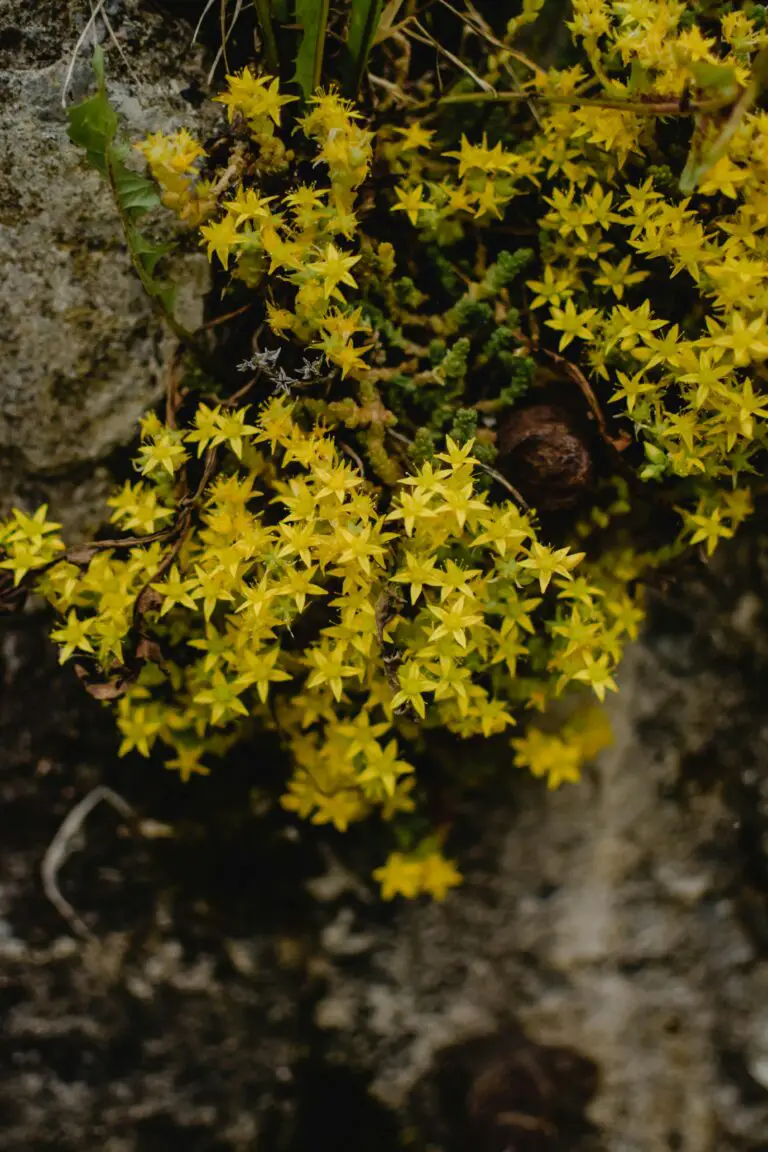Introduction to the World of Sedums
Dive into the delightful diversity of the sedum family, a group of succulents that captivate gardeners worldwide with their resilient and vibrant nature. From the rolling hills of alpine regions to the warm embrace of an indoor pot, sedums have a story that spans countless environments, mirroring the adaptability and tenacity of nature itself.
Take, for example, the lush sedum roofs found in Scandinavia—an ingenious application of these hardy succulents. These living rooftops are not only a testament to sedum’s versatility but also a striking sight against the Nordic sky. On a more personal scale, consider the joy of planting a handful of Sedum spectabile, witnessing its transformation from tiny sprigs into a sea of pink blossoms that sway gently in the autumnal breeze.
Their reputation as a gardener’s ally is well-earned; sedums are not known for their capricious nature. Needing little more than a sunny spot and well-draining soil, they’re the perfect companions for those with even the busiest of lifestyles. Yet despite their hardy reputation, these diligent bloomers can sometimes shy away from flowering. The question remains—why is my sedum not flowering?
Understanding the nuances of sedum care can unlock the secret to their vibrant blooms. For those seeking some green-thumbed guidance, explore essential care tips here that delve into when and how to give your sedums the TLC they need.
Characteristic Charm of Sedums
In discussing the allure that sedums hold within the plant kingdom, one cannot ignore their astonishing ability to flower even under the weight of challenging conditions. Unperturbed by drought, indifferent to neglect, sedum blooms rise like tiny triumphs over adversity. Their flowering habits serve as a beacon for pollinators, their star-shaped inflorescences bursting forth in colors that range from white to deep crimson.
Popular among gardeners not just for their hardiness but also for their aesthetic appeal, sedums have an undeniable magnetism. Their geometric leaves and clusters of petite flowers add a modern touch to garden beds and make for striking container displays. Beyond their decorative virtues, sedums contribute to biodiversity, offering sustenance to bees, butterflies, and other beneficial insects.

So, while you may sometimes puzzle over a sedum’s reluctance to flower, remember that with the right slice of sunlight, a careful watch on watering, and a whisper of patience, your sedum too will join the ranks of those that bloom with boundless energy—ushering in an era of color to rival any painter’s palette.
Understanding the Sedum Life Cycle
Is your sedum sitting in the garden like a wallflower while all the other plants are dancing in a riot of bloom? It’s time to get to the root of the issue by understanding the sedum life cycle. Like all living things, sedums have their own rhythm and timing for showing off their best assets—in this case, their captivating flowers.
First things first, let’s break down the stages of growth for these hardy succulents. We start with a shy sprout peeking out from the soil, slowly unfurling its leaves like a cautious caterpillar. The growth phase kicks in, and your sedum starts to bulk up, putting out rosettes and sturdy stems. Some say watching sedum grow is as satisfying as popping bubble wrap—from tiny tots to full-bodied beauties, these plants are a lesson in patience.
Now, let’s talk timing. Each sedum species has its own calendar for flowering. Some are early birds, ready to blossom when spring is barely awake. Others take their sweet time and wait until late summer or early fall to throw a floral fiesta. For instance, the beloved ‘Autumn Joy’ (quite the punctual chap) will have you waiting until late summer before it parades its rosy-pink blooms. Discover more about sedum flowering patterns.
Want a real-life example? Let’s think of ‘Purple Emperor’—a royal among sedums, draped in dark, moody foliage. It might look brooding all summer, then suddenly, as if touched by Midas, it explodes into starry, pinkish-purple inflorescences that can almost make you forgive its tardiness.
Now that you’ve got a glimpse of the sedum’s life through the seasons, it’s vital to realize that not all sedums will tiptoe into the limelight at the same time. It’s this symphony of schedules that makes sedums such an exciting bunch. Seek further insights and tips for a lush sedum spectacle in your own garden.
With this knowledge, you can plan your garden’s performance, ensuring that every act—every sedum—gets their moment to shine. Remember, the key to a stunning floral display is all about appreciating the rhythm and dances of the sedum life cycle. And with a bit of understanding and nurturing, you’re on your way to a standing ovation from every pollinator in town.
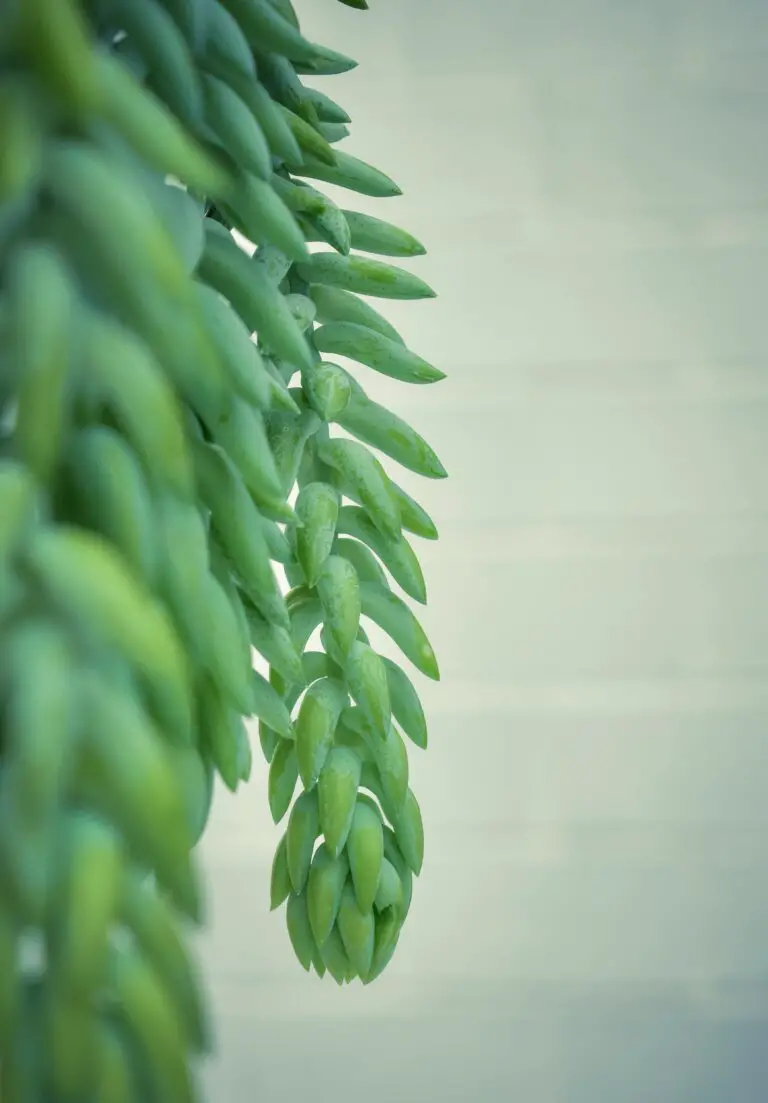
Common Reasons for Sedum Flowering Failures
If your sedum isn’t showing off its vibrant blooms, don’t fret; it’s a common hiccup among these hardy perennials. Let’s beam some light on the typical troublers that might be causing your sedum to shy away from flowering. Imagine a bed packed with lush, green sedums, the sun beating down, the soil just moist enough—a promise of burgeoning beauty, which, alas, remains unfulfilled. But why?
Lack of Sunlight: A Shadow over Blooming
First off, insufficient light can literally cast a shadow on your sedum’s blooming potential. Sedums are sun worshippers, and without those warm rays for a substantial part of the day, your plant might be left longing for more. The difference is stark; like a solar panel starved of sunlight, your sedum won’t have the energy to produce flowers.
Water Woes: The Delicate Balance
Next, let’s plunge into watering—get it wrong, and you might as well wave goodbye to those coveted flowers. Overwatering can lead to root rot, while underwatering stresses the plant. It’s like walking a tightrope; each step needs precision for your sedum to flourish. Imagine a watering can that’s always either too full or empty—neither state is conducive to a blooming sedum.
Poor Soil Conditions: The Foundation of Failure
Lastly, consider the soil—it’s the foundation of your plant’s health. Poor soil conditions, lacking in nutrients or drainage, could be the very crux of the issue. It’s akin to building a house on shaky ground; how can you expect the flowers to reach their pinnacle? Learn more about ideal sedum care practices to guarantee your garden’s success.
Solving these problems might be simpler than you think. Take a peek at this insightful video for tips on nurturing your sedums back to blooming beauty:
For gardeners seeking depth, discovering the timing and bloom cycles of sedums can be a revelation. Understanding these cycles is key to unlocking the flowering potential of these perennial pleasers. Transforming your sedum from a green clump into a flowering spectacle is indeed within reach with the right knowledge and care.
The Role of Sunlight in Sedum Flowering
Caught in the act of sulking in your garden, your sedum isn’t blooming, and you can’t help but wonder – is it getting enough sun? Unlike us, who might slap on some sunscreen and seek shade, sedums soak up sunlight like it’s going out of fashion. The amount, intensity, and duration of those golden rays directly influence your sedum’s runway-ready moment – the bloom.
Let’s break it down. Amount of sunlight is all about the daily dose of UV love your plant gets. Sedums are like the sun worshippers of the plant world; they need a full day of sunlight to be at their best. If your garden is more of a haven for shadows, your sedum’s blooming potential drops faster than a cellphone’s battery at a music festival.
Moving on to intensity – that’s the power punch of sunlight. Even on a cloudy day, if the sun’s rays are strong, your sedum might still gather the energy it needs to produce those show-stopping flowers. But remember, the ideal scenario is a spotlight of vivid light; think front row seats to the sun’s daily performance.
We can’t forget about duration. Sedums require a long catwalk of light, a consistent photoperiod, to trigger their flowering process. Short days can leave them feeling underwhelmed and underdressed, with not a flower in sight. A good rule of thumb is to ensure your sedum gets at least six to eight hours of sunlight each day for optimal flowering.
Now, cue the real-life example—a tale from a friend’s garden. Their sedum ‘Autumn Joy’ was more ‘Autumn Meh’, showing zero intention to bloom. Turns out, the light-hungry charmer was overshadowed by a burgeoning cherry tree. A quick relocation to a sunnier spot turned the sedum’s life around, and it bloomed like it was in the spotlight on Broadway.
To make sure your sedums aren’t left in the dark, follow these sun-soaked tips:
- Choose a spot in your garden that receives full sun for the majority of the day.
- Monitor your sedums throughout the seasons as the sun’s position shifts.
- If your area deals with intense heat, consider light afternoon shade to prevent scorching.
For those of you who are visual learners, here’s a video to give you a clearer picture of how to ensure your sedum gets the limelight it deserves:
Remember, when it comes to sedums, it’s all about the sun. Treat them to the light they crave, and you’ll be rewarded with a blooming spectacular that’ll make your green thumb tingle with pride. No more ‘why is my sedum not flowering’ woes, just a garden stage set for a floral encore!
Watering and Drainage: Hydration without Harm
Have you ever found yourself wondering, “why is my sedum not flowering?” It might just be a cry for help from your succulent friend, pointing to a hiccup in its hydration station. Getting the water balance right for your sedum isn’t just about quenching its thirst; it’s a fine art that can spell the difference between a floral fiesta and a blooming no-show.
Picture this: It’s a hot summer day, and you’re feeling parched. You grab a glass of water, take a sip, and instantly feel better. That’s your sedum with the perfect amount of water—refreshed, happy, and ready to bloom. But what if your glass of water was bottomless, always full, spilling over the edges without respite? Suddenly, your refreshing drink is more of a threat than a relief. That’s your sedum in overwatered distress, roots gasping for air, drowning in soggy soil.
Now, let’s get our hands dirty and talk about good drainage. It’s the unsung hero in the epic of your sedum’s blooming tale. Proper drainage is the guardian against the dreaded root rot, an arch-nemesis of flowering plants. Like a well-designed city gutter system during a heavy rain, good drainage in your garden beds or pots ensures that after a thorough watering, excess moisture can escape, leaving just the right environment for roots to thrive.
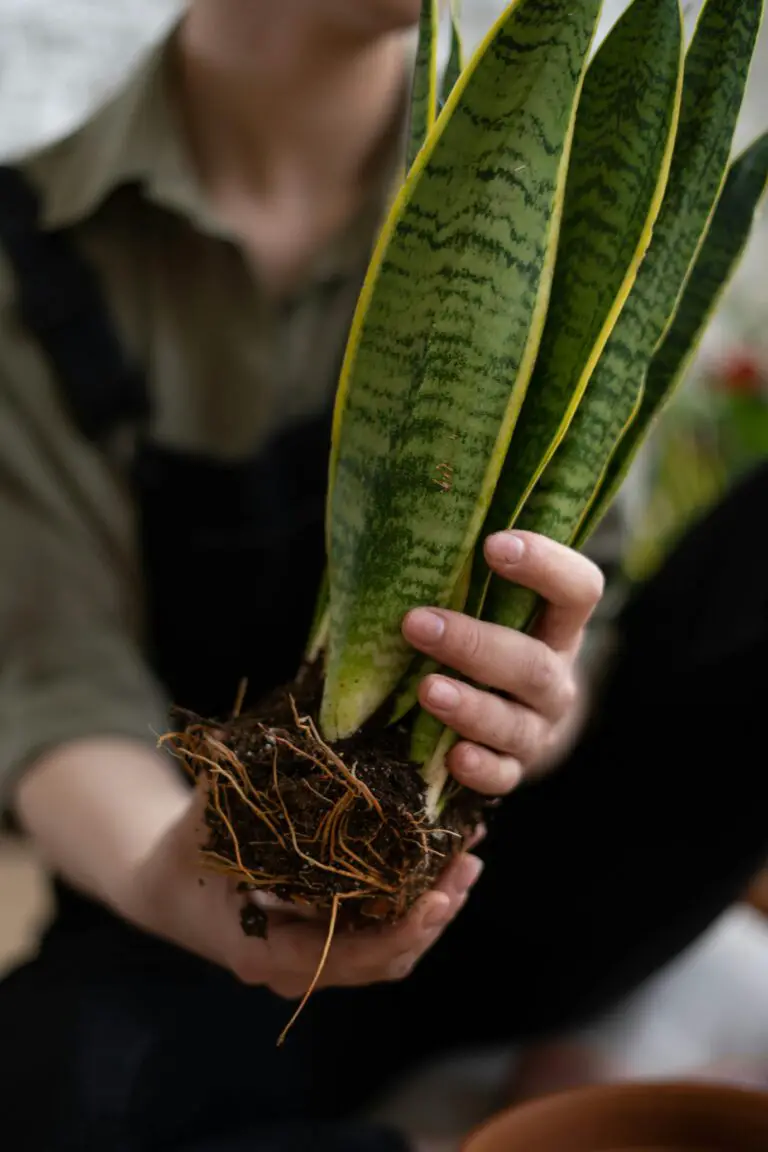
Imagine serving your sedum a gourmet meal of just the right amount of water and nutrients, but at a table with a wobbly leg. That’s poor drainage: it takes away from the dining experience. Now give it a sturdy table, perfectly level, and Voila! Your sedum is dining in style, and flowering becomes a celebration rather than a mere possibility.
In essence, watering your sedum is akin to pouring the foundations for a skyscraper. Do it right, and you’ve set the stage for a towering floral display. Overdo it, and well, you’re undermining the very groundwork needed for those blooms to reach for the sky. So keep a close eye on that delicate balance between hydration and ventilation to ensure your sedum’s root runway is clear for takeoff—straight into a blooming wonderland!
Fertilizing Your Sedum: More Blooms or Bust?
Have you ever found yourself standing in your garden, scratching your head and wondering, “Why is my sedum not flowering?” You’re not alone. One of the culprits behind this floral frustration could very well be the fertilizer you’re using—or not using. Let’s dive deep into how fertilization can either be a boon for your sedum’s blooms or its worst enemy.
The Delicate Dance of Nutrients
First things first, you need to understand that sedum plants are like the Goldilocks of the plant world—they prefer their nutrients just right. Over-fertilize your sedum and you could end up with lush, green growth at the expense of those coveted flowers. Under-fertilize, and your sedum might not have the energy to produce blooms at all. It’s all about balance!
Picture this: your neighbor, Jane, loves to spoil her plants. She showers her sedum with a high-nitrogen fertilizer every week, hoping for a botanical bonanza. But alas, her sedum’s leaves are greener than a frog in a fresh bed of lettuce, with not a flower in sight. That’s because excess nitrogen promotes foliage growth but can inhibit flowering. On the flip side, a little potassium goes a long way to bolster flower production. It’s like giving your sedum a secret handshake that says, “Let’s get blooming!”
Reading the Signs: Sedum’s Silent SOS
Now, let’s turn our gaze to Bob, another gardening aficionado. He’s more of the ‘set it and forget it’ type, barely glancing at his sedum, let alone feeding it. One day he notices the sedum looking a bit down on its luck—leaves are droopy, and blooms are as scarce as hen’s teeth. That’s your sedum’s way of whispering, “Hey buddy, I could use a little pick-me-up here!” A balanced fertilizer, with equal parts nitrogen, phosphorus, and potassium, could be just the thing to perk up those flowers.
Here’s a tip straight from the pros: sedum doesn’t need to feast on fertilizer all year round. A light meal in the spring is usually enough. It’s like pre-gaming before the big flower party in the summer. Just a sprinkle of a slow-release fertilizer formula can set the stage for a spectacular bloom display.
For those looking for a more visual guide, check out this video that illustrates the impact of proper fertilization on sedum blooming:
Remember, every sedum is its own individual, so what works for one might not work for another. It’s a bit of trial and error. Think of it like tuning a guitar; once you hit the right note, the music of blooming sedums will be music to your eyes!
The Impact of Temperature and Climate
If your sedum isn’t showing off its floral fireworks, it could very well be due to the whims of weather and the peculiarities of place. The sedum, a plant that thrives in the kiss of the sun, can be quite finicky under the thumb of temperature changes and shifts in climate. So, let’s dig into the dirt of this blooming conundrum and unearth what might be going on with your green friend.
Consider this: Sedums are like Goldilocks in the garden; they prefer conditions that are just right—not too hot, not too cold. In sweltering climates, these succulents might opt for survival over showiness, channeling their energy into their roots rather than their blooms. On the flip side, if Jack Frost is nipping at your garden, your sedums may hold back their blossoms, waiting for warmer days. It’s all about finding that sweet spot where your sedum can soak up the sunshine and bask in balmy bliss.
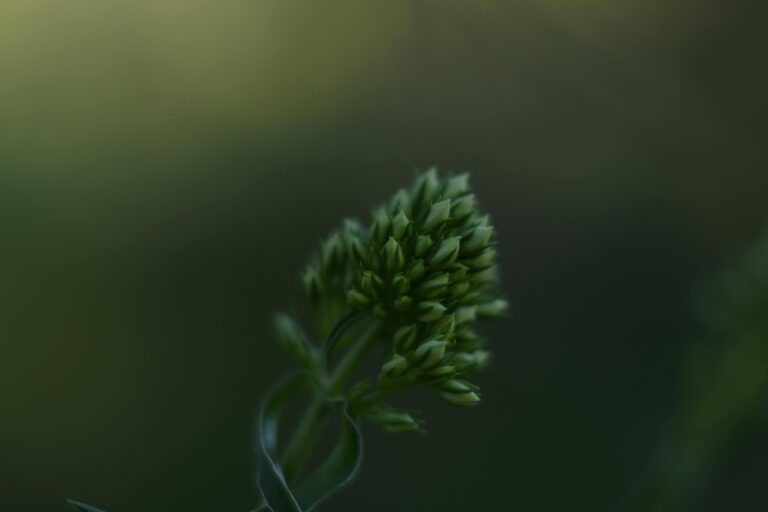
Imagine a sedum in Seattle, where skies often wear a blanket of clouds. Without enough sun-drenched moments, sedums might struggle to sport their signature star-shaped blooms. Now picture a sedum in the scorching Southwest, baking in a desert daydream. The intense heat may spur the plant to conserve resources, again, at the expense of flowers. The key is to create a microclimate—a cozy nook that caters to your sedum’s preferences. Whether that means providing shade during the hottest part of the day or protecting your plants from frosty nights, you’ve got to play plant-protector to encourage those shy buds to blossom.
Let’s not forget that weather can be fickle, throwing your sedum’s blooming schedule off-kilter. A sudden spring frost can freeze the flowering in its tracks, while an unseasonally warm winter might prompt premature petal pushing—not ideal for timing the grand floral display. Tracking your local climate patterns and adjusting your sedum’s care accordingly will go miles in maximizing its bloom potential.
By tuning into your sedum’s needs and tailoring your garden practices to the unique dance of local weather, you’ll increase your chances of a sedum spectacle. Remember, gardening is not just a science; it’s an art that requires intuition, patience, and a willingness to bend with the breeze and flow with the frost.
Pests, Diseases, and Other Flowering Foes
When your sedum stubbornly refuses to showcase its floral splendor, it’s like a baking show where the cake doesn’t rise—the anticipation fizzles into frustration. You care for it, you nurture it, but where are the flowers? Often, the culprits behind this botanical letdown are as sneaky as they are harmful: pests and diseases. Understanding these floral felons is key to transforming your sedum from a green clump to a blooming wonder.
Imagine aphids, those tiny green guerillas, descending upon your sedum’s foliage, pilfering the plant’s vital juices. These sap-sucking insects drain the life force necessary for your sedum to burst into blooms. Similarly, scale insects, armored and stubborn, attach to stems, declaring a siege on your garden’s fortresses. They’re not just invaders; they’re conquerors that can leave your sedum flowerless and forlorn.
Then, there are the diseases—the stealthy saboteurs. Fungal foes like powdery mildew spread their spores across the leaves like a dusting of flour, inhibiting photosynthesis and sapping the energy that should go toward flowering. Root rot, an underground assassin, thrives in overly moist conditions, causing sedum roots to turn into mush instead of supporting a thriving flowering show.
It’s not all doom and gloom in the garden, though. You can arm your sedum against these pests and diseases with an arsenal of preventative and treatment solutions. Regular inspections for early signs of infestation, proper spacing for air circulation, and avoiding overwatering are akin to assembling an elite floral defense force. For aphids, a strong blast of water or introduction of ladybugs can vanquish these vexing villains. Should fungal diseases rear their ugly spores, a blend of neem oil or a change in watering tactics might just spare your sedum from a flowery fate worse than death: bloomlessness.
Bear in mind that every plant’s environment and conditions are akin to individual fingerprints—unique and varied. Tailoring your approach to your sedum’s specific situation is crucial. And remember, it’s not just about averting disasters; it’s about cultivating a garden where every sedum can reach its full, floriferous potential.
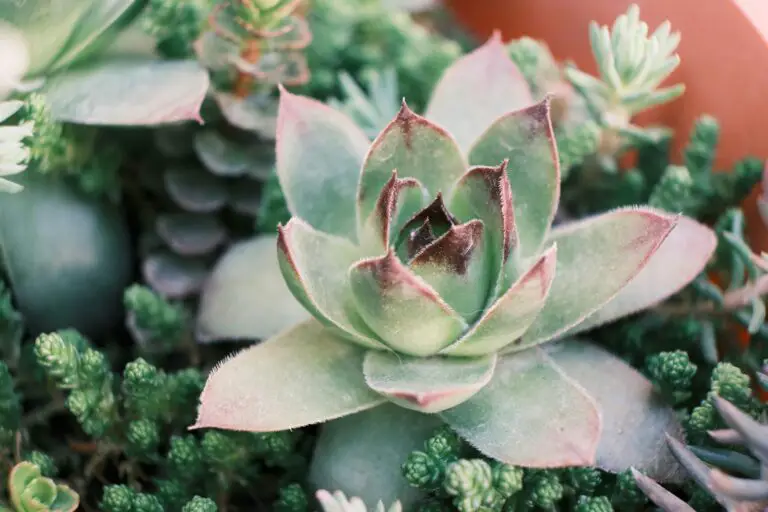
Now, with these insights, you’re equipped to stage an intervention, turning the tide in the eternal struggle between your sedum and the sinister forces that would keep it from blooming. You’ve got this, green thumb warrior. Happy gardening and better blooming!
Pruning and Care: Setting the Stage for Next Season
Let’s talk pruning and care; the unsung heroes of flourishing sedum gardens! If the suave sedums in your garden spurned flowering this season, fret not. With the right snips and clips, you can cajole those sassy succulents into a botanical extravaganza next year.
Imagine treating your sedum like a topiary artist sculpting a masterpiece. The key is thoughtful pruning. Start by bidding adieu to deadheads and any frail, feeble stems that did not flower. Pruning isn’t just about aesthetics; it’s a strategic move to encourage the plant to channel its energy into the robust growth of budding young shoots.
Cut with Confidence
When to brandish the shears, you ask? Make your move right after the sedum has finished its show for the season. Snip the stems about a third of the way down, cutting above a healthy leaf pair. It’s akin to a pep talk that tells your plant, “Buddy, it’s time to hunker down and get ready for glory next spring.”
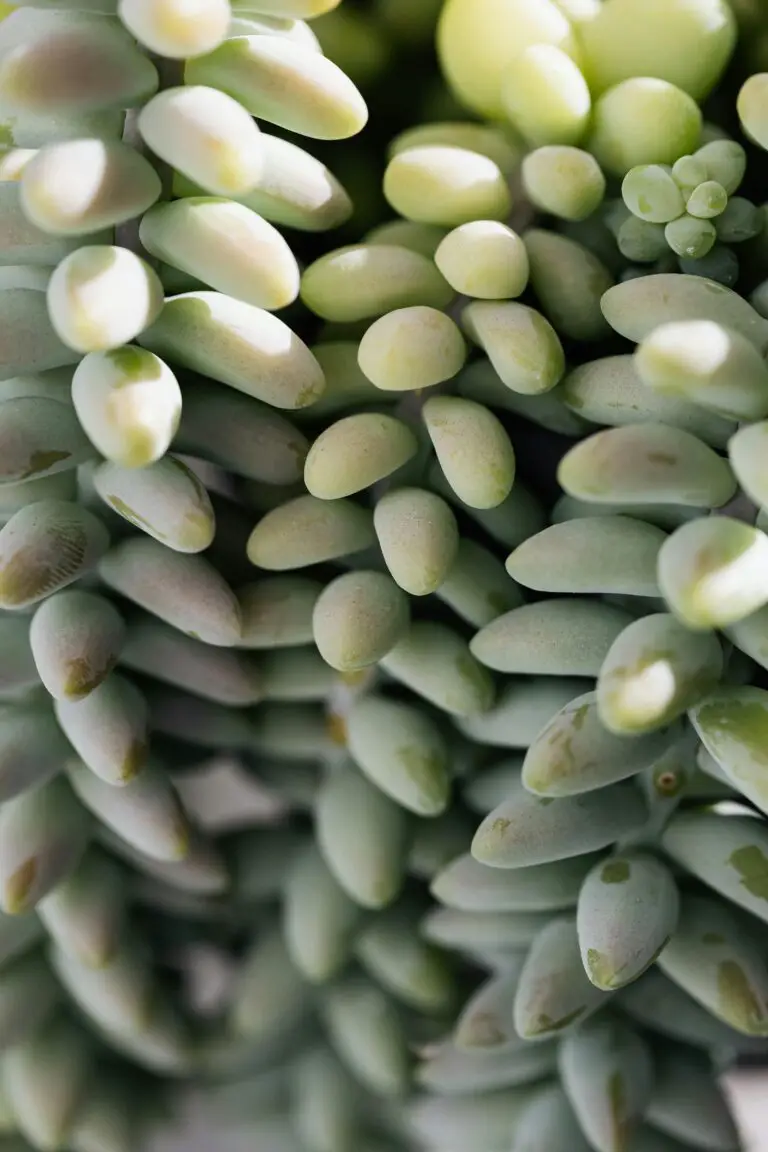
A Little TLC Goes a Long Way
Pruning isn’t the only arrow in your quiver. Your sedum also craves a little tenderness with its care regimen. Watering, though sparse it should be for these drought-happy darlings, must be consistent. Douse the roots deeply but infrequently, averting the foliage—waterlogged sedum is a no-no.
The right feeding schedule can make a world of difference, too. A balanced, slow-release fertilizer can prep your plants for a blossoming bonanza. Just remember to read the room—or the soil, rather. Test it before you treat it, ensuring that you’re not overdoing it with nutrients.
Then there’s the sunbathing—to flower abundantly, sedum demands its day in the sun. Full, unadulterated sunlight kindles those buds into being. If your sedum is basking in too much shade, it’s time to find it a sunnier theatre for next year’s performance.
By adhering to a regimen of proper pruning and diligent care, you’re not just setting the stage for next season; you’re laying the groundwork for sedum that will be the talk of the town (or at least the envy of your neighbors). Now, isn’t that a plot twist worth the effort?
Choosing the Right Sedum Variety for Your Garden
Are you stumped about why your sedum isn’t boasting those charismatic clusters of blooms? Maybe it’s time to dive a bit deeper into the world of sedum varieties! Not all sedums are created equal when it comes to their time to shine in the spotlight of your garden stage. Let’s clear the confusion and get your green friends flowering!
If you’re like my friend Clara, who loves a garden that’s a non-stop party of color, understanding the rhythm of sedum flowering times is key. Sedum, or stonecrop, comes in a merry-go-round of varieties, each with its own schedule for stealing the show. Some sedums rise to the occasion in the sultry heat of high summer, while others prefer the crisp curtain call of autumn. By choosing a mix of early bloomers and latecomers, you can ensure a seamless succession of nectar-rich blooms that keep pollinators and your peepers pleased throughout the season.
But hold your trowels, fellow gardeners! Sedum selection isn’t just about timing; it’s a veritable palette to paint with. From the delicate pinks of ‘Autumn Joy’ to the bold reds of ‘Vera Jameson’, each variety contributes a unique hue to your garden’s masterpiece. Picture the vibrant ‘Lime Zinger’ with its electric green foliage and pink edges forming a striking contrast against the earthen tones of ‘Chocolate Drop’. It’s like having a living kaleidoscope at your doorstep!
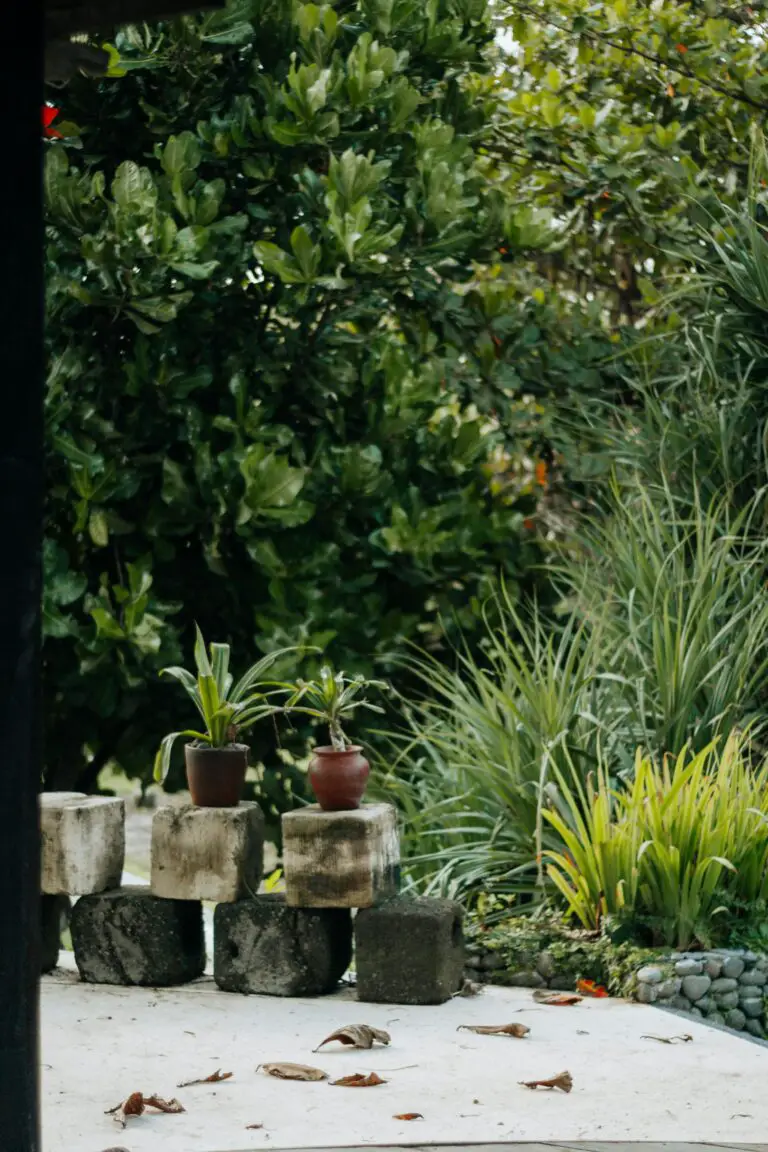
Consider the space cadets in your garden beds too. Compact types like ‘Cape Blanco’ are stars in rockeries or tight corners, reserving their energy to burst forth with all their might in smaller yet impactful displays. Meanwhile, the robust ‘Matrona’ likes to stretch its legs, filling up more space and commanding attention with towering floral spires.
Take the story of my neighbor Dan’s ‘Dragon’s Blood’ sedum. Tucked in the front row of his garden border, its fiery red flowers liven up the landscape, attracting a buzz of activity from eager bees and butterflies. With sedums, you’re not just planting for beauty; you become a stage director orchestrating a dynamic, living scene that benefits nature’s tiny performers and your garden’s visual symphony.
Embracing a variety of sedums creates not only a visual feast but also an oasis ripe for ecological harmony. So, garden gurus, roll up your sleeves and mix those sedums! With the right selection, your green haven will be aflutter with life and a smorgasbord of blossoms from spring to frost. Now, who’s ready to watch their garden transform into a floral paradise?
Real Gardener Experiences with Non-Flowering Sedums
Sedum enthusiasts often share their tales of woe and wonder when it comes to these succulent beauties blossoming. One gardener, who we’ll call Jane, faced a perplexing situation when her ‘Autumn Joy’ refused to greet autumn with its characteristic vibrant pink blooms. It wasn’t until Jane adjusted the lighting conditions, moving her potted sedum to a sun-drenched corner of the garden, that she saw the first signs of flower buds. The lesson here? Sedums are solar-powered bloomers, needing full sun to show off their flower power.
Another green-thumbed individual, Tom, discovered through trial and error that his watering routine was to blame for his sedums’ lackluster performance. Switching from a daily sprinkle to a ‘soak-and-dry’ method that mimics natural arid conditions, Tom finally witnessed his sedums’ transformation with an explosion of starry flowers. His takeaway tip: Overwatering can lead to floppy, flowerless sedums. Sedums prefer to sip rather than swim.
Don’t forget the soil, says a seasoned gardener named Lucy. After years of failing to see her ‘Purple Emperor’ sedums bloom, Lucy conducted a soil test and found her garden beds were high in nitrogen, which encouraged leafy growth but inhibited flowering. With the addition of bone meal to increase phosphorus content, her sedums began to thrive and bloom. Lucy’s advice to fellow plant lovers is to make sure the soil provides the right balance of nutrients for sedums to flower.
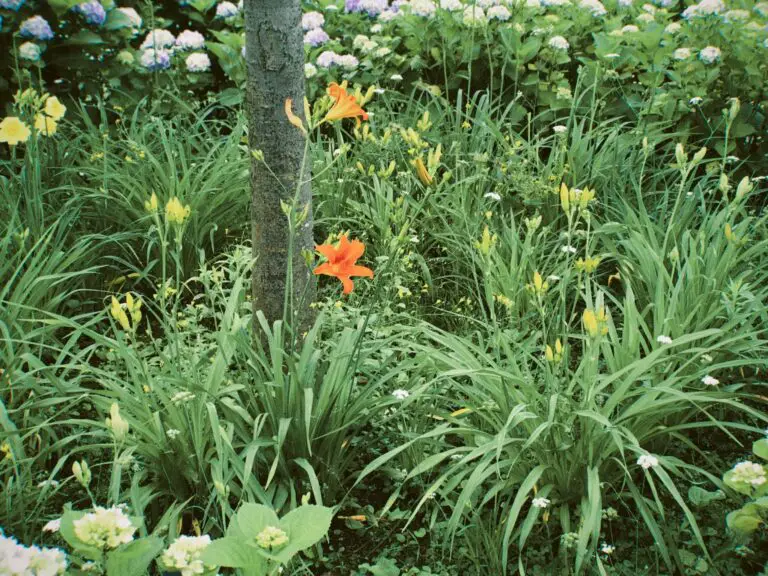
The key to sedum success seems to resonate with the experiences of many gardeners: a harmony of the right amount of sunlight, mindful watering, and balanced soil nutrients. Bearing witness to these gardeners’ trials and triumphs can surely pave the way for your own sedum saga to blossom into a story of vibrant, joyous flowers.
Frequently Asked Questions
If there’s one thing garden enthusiasts love, it’s the moment when their plants burst into bloom. But sometimes, our green-fingered dreams are dashed when a plant refuses to flower. If you’re scratching your head wondering, “why is my sedum not flowering?” you’re not alone. Let’s dive into some of the most common queries gardeners have about sedum and its blooming habits:
Q1: Can sedums bloom more than once a year?
Many sedum enthusiasts eagerly anticipate that burst of color that sedums are known for. Typically, these succulent beauties are perennials, treating us to a splendid floral display just once a year. However, in the hands of an attentive gardener, certain varieties, like ‘Autumn Joy’, might just surprise you with a second showing. To maximize your chances, ensure your sedum gets the right care after the first bloom—some well-timed deadheading might just coax out another round of flowers.
Q2: Will sedums flower in the shade?
A shaded spot might seem like a cool refuge from the scorching sun, but for your sun-loving sedum, it can mean a lackluster flowering season—or none at all. Sedums are like sunbathers; they thrive in full sunlight. Planting them in the shade might yield luscious greenery, but flowers could be scarce. If you want to see those vibrant blooms, find a sunny spot where your sedum can bask in at least six hours of sunlight daily. It’s like a solar charge for an impressive floral display!
Q3: How long does it typically take for a sedum to start flowering?
If patience is not your virtue, sedum can be a test of your green-thumb endurance. These plants aren’t known for their speed—they take the scenic route to flowering. Typically, it takes about a year for a young sedum to establish itself and treat you to its floral spectacle. But when it does, it’s worth the wait. Each variety has its own rhythm; with ‘Matrona’ taking the slow dance approach, you can marvel at its pink blooms gracing your garden in late summer to early fall.
Q4: Can I encourage my sedum to flower through pruning?
Sedums respond well to a good trim—think of it as a pep talk that spurs them into action. Pruning in early summer, a method popularly known as the ‘Chelsea chop’, can not only encourage a bushier growth and prevent the ‘floppy’ sedum syndrome but can also stimulate flowering. By cutting back the stems by one-third, you’re essentially nudging your plant to focus its energy on creating a dazzling floral display.
Q5: Do sedums need special fertilizer to flower?
You might think that pumping your sedum full of fertilizer is the secret to unlocking those elusive flowers. But in the world of sedums, less is often more. These hardy plants are the minimalist artists of the garden—they don’t require rich soil or heavy feeding to flower. A light touch with a balanced, slow-release fertilizer in the spring is ample. Overfed sedums can end up with luxurious foliage at the expense of blooms, so keep it simple for a garden showstopper.
